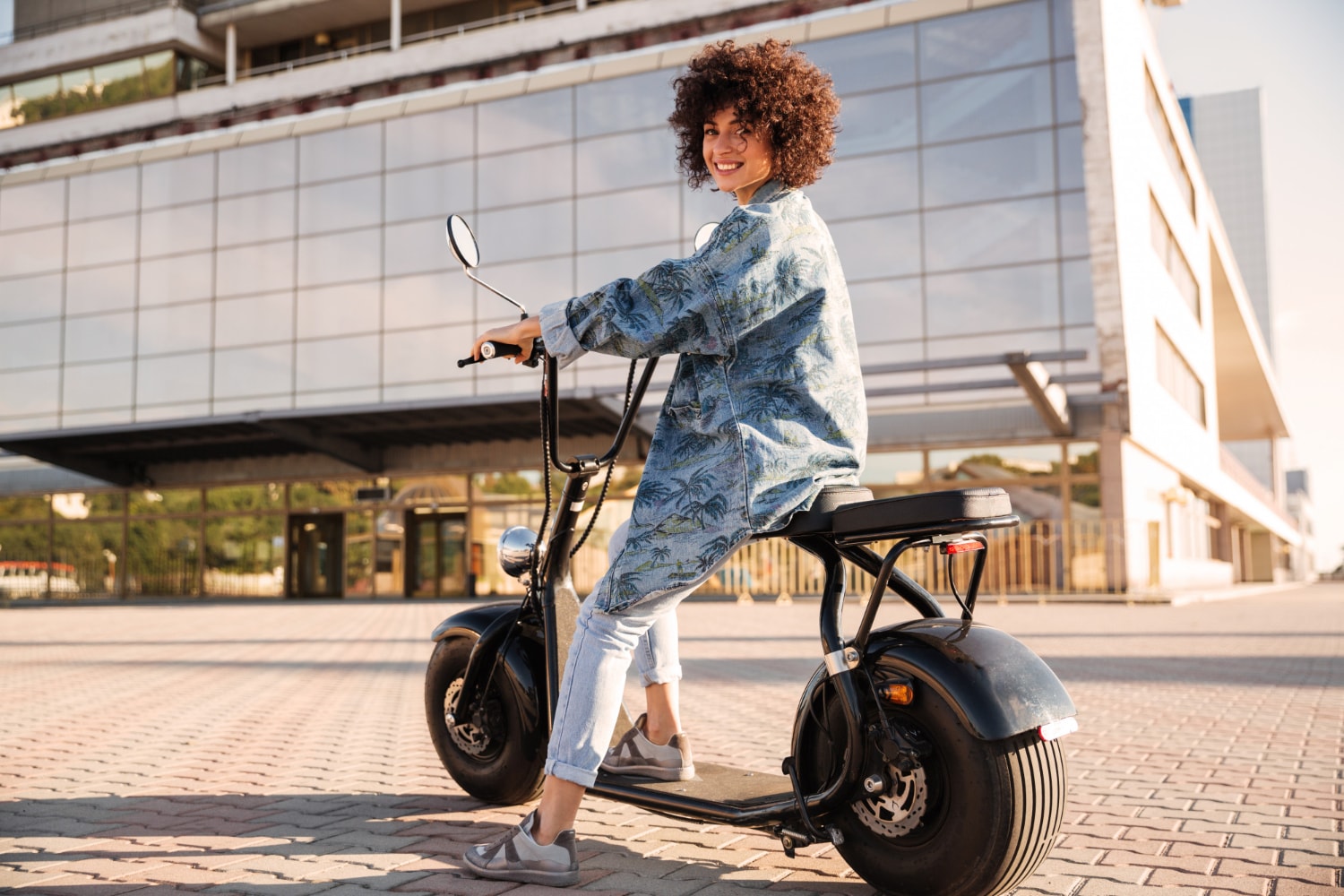Electric scooters are everywhere, and with this rise in popularity, as a rider, you’re supposed to know how to handle one. You use electric scooters to get around and imagine if you’re on your way somewhere urgent, the last thing you want is for the battery to be low and to find yourself stuck somewhere alone. So even if you’re a commuting professional or rented a scooter to explore someplace new, you should always know the proper charging technique to extend the life of your scooter as well as ensure there are no hassles in your ride adventure.
If you know all about the right way of charging an electric scooter, it can maximize the scooter’s lifespan and performance. In this article, I’ve made a step-by-step guide to ensure your electric scooter is charged the right way and is maintained in top-notch condition, even when you zip through city streets or bustling crowds.
Understanding Scooter Batteries
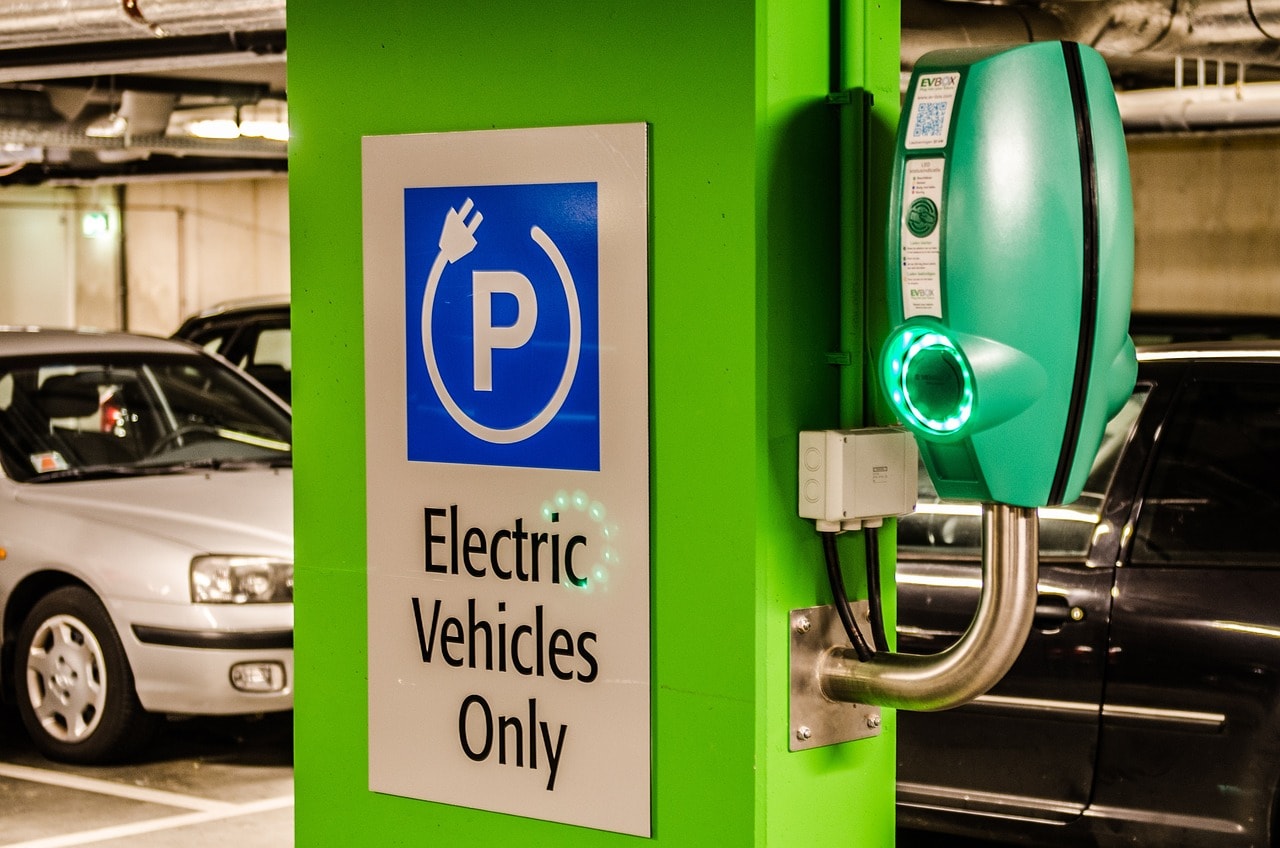
If you compare electric scooters to human beings, you should know that their battery is like a full-time working heart. In this section, let’s look at the types of electric scooter batteries, and make sure you read through to get the most out of your scooter.
Types of Batteries
This is something every electric scooter enthusiast knows already, most electric scooters use lithium-ion batteries, which are lightweight, compact, and have a high energy density. This only means that it stores a lot of energy while occupying only a small space, making it a perfect choice for electric scooters. Lithium-ion batteries also have the longest lifespan and can be recharged many times before they start to degrade. But there are other types of batteries, such as lead-acid batteries, that are used in some electric scooters. In comparison, car batteries have a higher voltage and are not typically used for electric scooters due to the risk of damage from voltage mismatches.
Lithium-ion (Li-ion) Batteries: Lightweight, efficient, and long-lasting, these are the most common in modern scooters. It is more sensitive to charging habits.
Lead-acid Batteries: Heavier and less efficient, these are typically found in older or budget models.
Battery Lifespan and Health
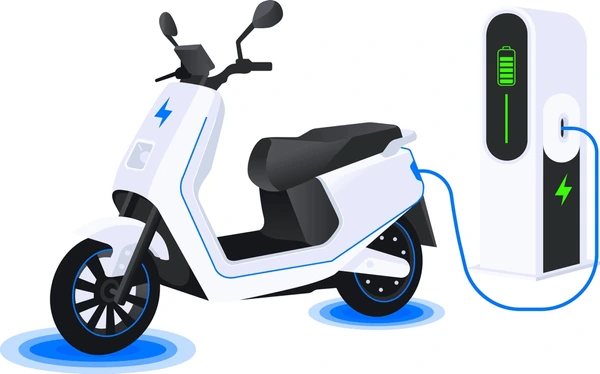
To make sure your battery lasts as long as possible, you need to understand the battery lifespan and health. The lifespan of a battery depends on several factors, including the battery capacity, voltage, and the number of cycles it has gone through. The battery’s capacity refers to the amount of energy the battery can store, while voltage refers to the electrical pressure in the battery.
Proper battery charge procedures are essential to prevent issues such as the formation of crystals within lead-acid batteries, which can affect charging efficiency.
Here are some initial tips you need to keep in mind to ensure your battery lasts as long as possible:
- Avoid extreme temperatures while charging; only charge at room temperature.
- Don’t try to overcharge your battery and don’t undercharge it.
- Only use the correct charger that came with your scooter.
- Don’t drain the battery completely; recharge before the battery level drops below 20%.
- Clean the battery terminals.
- Check the battery’s state of charge.
- Charge regularly even during storage.
One inevitable thing is that over time, batteries will start to degrade, which means they won’t be able to hold as much charge as they used to, so always keep an eye on your battery’s health and replace it when necessary.
Preparation for Charging
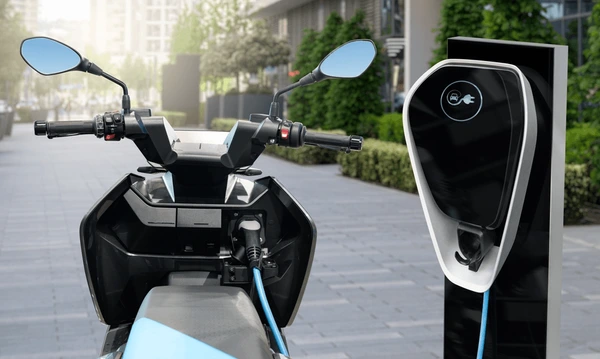
To ensure your safety, you need to perform some safety checks and create optimal charging conditions. Proper preparation ensures that your e-scooter is ready for a safe and efficient charging process. This is a simple checklist you have to keep in mind while you prepare your scooter for charging.
Safety Checks
Check the charging port
You need to ensure your charging port is clean and free from any debris. If the port is dirty, only use a dry cloth to clean it before plugging in the charger.
Check the manual
There’s always a manual that comes with your electric scooter. Normally, people don’t read them but try to read them well before using them for the first time. You will understand the manufacturer’s recommendations for charging, which will help you avoid damaging the battery or charger.
Check the environment
You need to ensure that the area where you will be charging your electric scooter is dry and at room temperature. You need to avoid charging your scooter in the rain, snow, or any wet conditions.
Wear protective gear
You need to make sure you use protective gear such as gloves or safety glasses if you’re planning to handle the battery or charger. There’s always a risk associated with handling electricity.
Optimal Charging Conditions
To make sure your electric scooter is charged optimally, create the following charging conditions:
- Dry environment: Ensure the area where you’ll be charging is dry and well-ventilated.
- Safe power outlet: Ensure the power outlet is easily accessible and not overloaded with other chargers.
- Room temperature: Ensure the area where you will be charging your electric scooter is at room temperature.
- Proper charger: Use the charger that comes with your electric scooter.
- Avoid overcharging: Do not overcharge your electric scooter; you need to unplug it once the battery is fully charged.
How to Charge a Scooter Battery
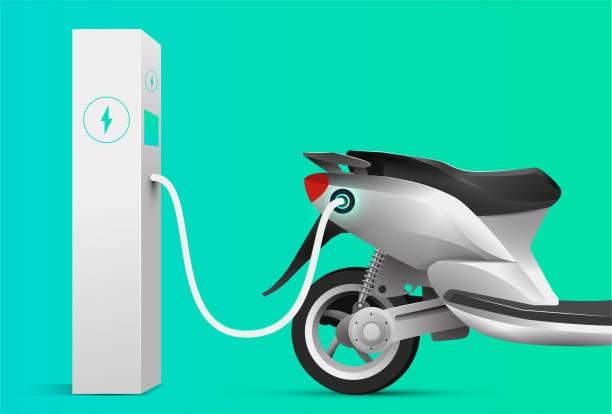
Using a Charger
I can’t stress enough about the importance of using a charger specifically designed for your electric scooter is crucial for safe and efficient charging. The correct charger ensures that the battery receives the appropriate voltage and current, preventing potential damage and extending the battery’s lifespan.
When using a charger, follow these steps:
- Connect the Charger: Locate the charging port on your scooter and connect the charger. Ensure the connection is secure to avoid any interruptions during the charging process.
- Plug into a Power Outlet: Insert the charger plug into a power outlet. Make sure the outlet is not overloaded with other devices to prevent electrical issues.
- Turn on the Charger: Activate the charger. Most chargers have an indicator light that shows the charging status. A red light typically means charging is in progress, while a green light indicates a full charge.
- Monitor the Charging Process: Keep an eye on the indicator light to ensure the battery is charging correctly. If the light doesn’t change as expected, there might be an issue with the charger or the battery.
- Disconnect After Charging: Once the battery is fully charged, turn off the charger and disconnect it from both the scooter and the power outlet.
Using the correct charger is essential to avoid overcharging, undercharging, or ending up with a dead battery. Always use the charger that came with your scooter or one recommended by the manufacturer to ensure optimal performance and safety.
Battery Voltage Considerations
When charging your electric scooter, you need to pay attention to the battery voltage. Most electric scooters use lithium-ion batteries, which have specific voltage requirements to ensure safe and efficient charging.
Here are some battery voltage considerations to keep in mind before charging your electric scooter:
- Check the Manual: Refer to your scooter’s manual to determine the recommended battery voltage. This information is crucial for selecting the right charger.
- Use the Correct Charger: Ensure the charger matches the recommended battery voltage. Using a charger with the wrong voltage can damage the battery or the scooter.
- Avoid Voltage Mismatches: Never use a charger with a higher or lower voltage than recommended. This can lead to overcharging, undercharging, or even permanent damage to the battery.
- Monitor Voltage During Charging: Keep an eye on the battery’s voltage during the charging process. Most electric scooters have a display that shows the battery’s voltage, helping you ensure it stays within the recommended range.
By considering these voltage-related tips, you can maintain the health and efficiency of your lithium-ion battery, ensuring your electric scooter remains reliable and safe to use.
Step-by-Step Charging Process
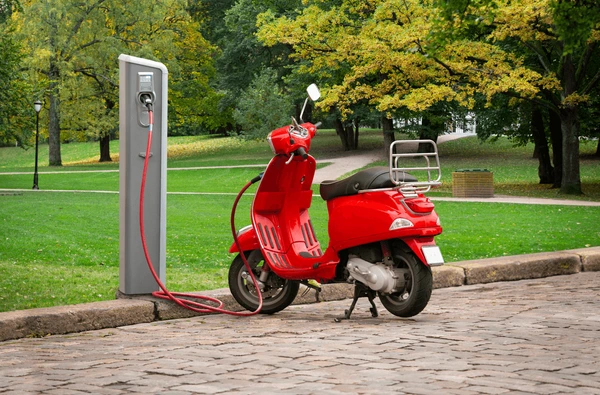
Here is a step-by-step charging process to help you charge your electric scooter correctly:
- You need to turn off your electric scooter before charging it.
- Locate the charging port on your electric scooter. It is usually located on the bottom of the scooter.
- Now, you need to plug the charger into the charging port. Make sure the charger is firmly connected to the port.
- Plug the charger into a wall outlet. Make sure the outlet you use is not overloaded and is compatible with the charger.
- Turn on the charger. Most chargers have an indicator light that will turn green when the battery is fully charged. Some chargers have a red light that will turn green when the battery is fully charged.
- Wait for the battery to charge fully. The charging time will vary depending on the battery capacity and the charger used. You can refer to the charging timetable provided by the manufacturer to estimate how long it will take to charge your battery.
- Don’t Ride Immediately After Charging: You need to wait for about 10 minutes to let the electric scooter battery cool off after being charged.
Monitoring the Charge
You need to monitor the battery’s charge level while charging. Here are a few tips to help you monitor it perfectly:
- Always keep an eye on the indicator light on the charger; it will turn green when the battery is fully charged.
- If your charger does not have an indicator light, you need to check the battery’s charge level on the electric scooter’s display.
- Monitor the battery’s voltage during the charging process to ensure it stays within the recommended range.
- Disconnect the charger from the wall outlet once the battery is fully charged.
Maintaining Battery and Charger Health
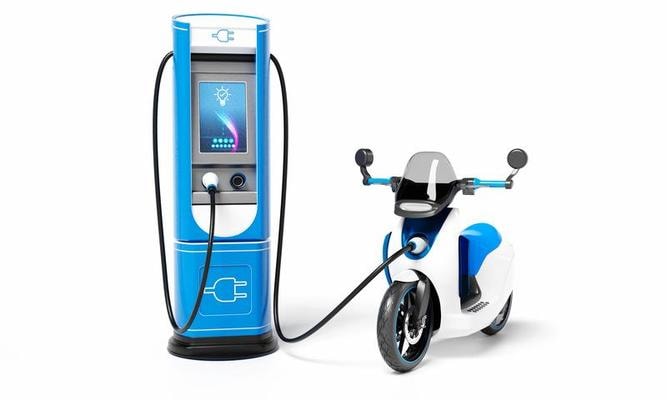
In this section, to ensure the longevity of your electric scooter’s battery and charger, it is important to follow proper charging techniques. One of the most important things to keep in mind is to NOT OVERCHARGE your battery. Overcharging will, of course, lead to reduced battery life and can even cause damage to the battery. You need to disconnect the charger immediately once your battery is fully charged.
It is also important to use the original charger that came with your electric scooter. Using a different charger, especially a fast charger, can lead to reduced charging speed and efficiency and can even damage your battery.
Fast charging often leads to reduced battery life. It is recommended to use a slower charger and to avoid charging your battery too quickly.
Avoid common charging mistakes like leaving your electric scooter plugged in longer than necessary. It is also important to regularly charge your electric scooter even if you have not used it in a while.
Charger Maintenance
- You need to regularly check the charger for any signs of damage or wear.
- Don’t leave your scooter plugged in overnight
- Clean the charger’s contacts and cables to ensure proper connection.
- Store the charger in a dry, cool place when not in use.
- Never charge a damaged or swollen battery, as it can be a fire hazard.
Troubleshooting Charging Issues
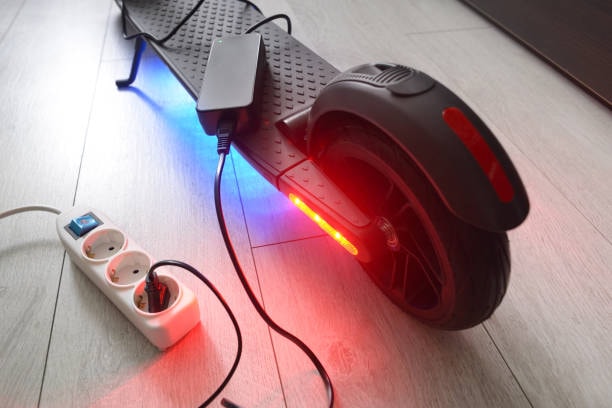
If you’re experiencing charging issues, you don’t have to worry much, as common charging problems can be resolved with some simple troubleshooting steps. In this section, we will cover some common charging problems and when to seek professional help:
Common Charging Problems
Not charging while plugging in: If your electric scooter won’t charge, you need to check the charging head first. Make sure it’s properly connected to the scooter. Ensure that the charging cable is fully plugged into the charging port and that the charging head is plugged into a working power outlet. If it’s still not charging, check for any visible damage to the charging cable or charging port. If you notice any damage, immediately contact the manufacturer or retailer for assistance.
Fast chargers:
Using a fast charger can cause charging issues with your electric scooter. Fast chargers can put too much strain on the battery, causing it to overheat or become damaged. Stick to using the charger that came with your electric scooter to avoid any potential charging problems.
Short circuits:
Short circuits can occur when there is a problem with the wiring or electrical components in your electric scooter. If you suspect a short circuit, stop using your electric scooter immediately and seek professional help.
Troubleshooting Steps
- As I said, check the manufacturer’s instructions for troubleshooting steps specific to your scooter.
- You can consult online forums or support groups for help and tips from other scooter owners.
- Contact the manufacturer or a professional mechanic if you’re unable to resolve the issue.
Tips to Extend Your Scooter Battery Life
Here are some extra tips to keep in mind while you charge your scooter battery:
Recharge regularly
The batteries should be fully charged prior to your first ride on a new scooter. If your scooter is kept in storage, the battery should still be fully charged once a week. If your scooter is not used every day, you should charge it after each time you drive it.
Practice Partial Charging
Instead of charging to 100% every time, aim for 80-90%. This reduces stress on the battery and can significantly extend its lifespan.
Avoid Frequent Short Charges
While it’s okay to top up your battery occasionally, frequent short charges can lead to a phenomenon called “battery memory,” which reduces overall capacity.
Conclusion
If you’re planning to rent an electric scooter on your vacation, this guide will help you have a smooth, hassle-free adventure without worrying about how to charge your scooter. You need to be aware of that properly charging your scooter battery is essential to extend its lifespan and ensure your safety while riding. By following the steps in this guide, I hope you understand how to properly charge an electric scooter. You need to follow regular maintenance and mindful charging practices in the long run to preserve the longevity and performance of your scooter.
Just like fueling up a car, charging your scooter is a routine that, when done correctly, becomes second nature, allowing you more time to explore and less time tethered to an outlet. With these newly acquired tips on charging the right way, I hope you get to enjoy uninterrupted rides filled with comfort and efficiency. I hope you get to enjoy your scooter without facing any challenges. Happy Riding!
Frequently Asked Questions
Can a dead scooter battery be recharged?
Yes, refueling electric motorbike batteries can be risky. The main concern is the potential for the battery to overheat, which could lead to accidental burns or even an explosion. This risk is higher if the battery has been neglected or is damaged. Always ensure that the battery is in good condition and properly maintained to minimize these risks.
How do you start a scooter with a dead battery?
To start a scooter with a dead battery, put it in first gear and push the scooter to gain some speed. Once you’ve reached a certain velocity, release the clutch to start the engine. Keep in mind that the battery should be replaced when the vehicle is not in use for long periods.
Can I charge a scooter battery with a car charger?
It is generally okay to charge a scooter battery with a car charger, as long as the battery is 12V. However, keep in mind that it will take longer to charge the scooter battery compared to a car battery, especially if the scooter battery has a lower amp hour (Ah) rating, like 7 Ah.

